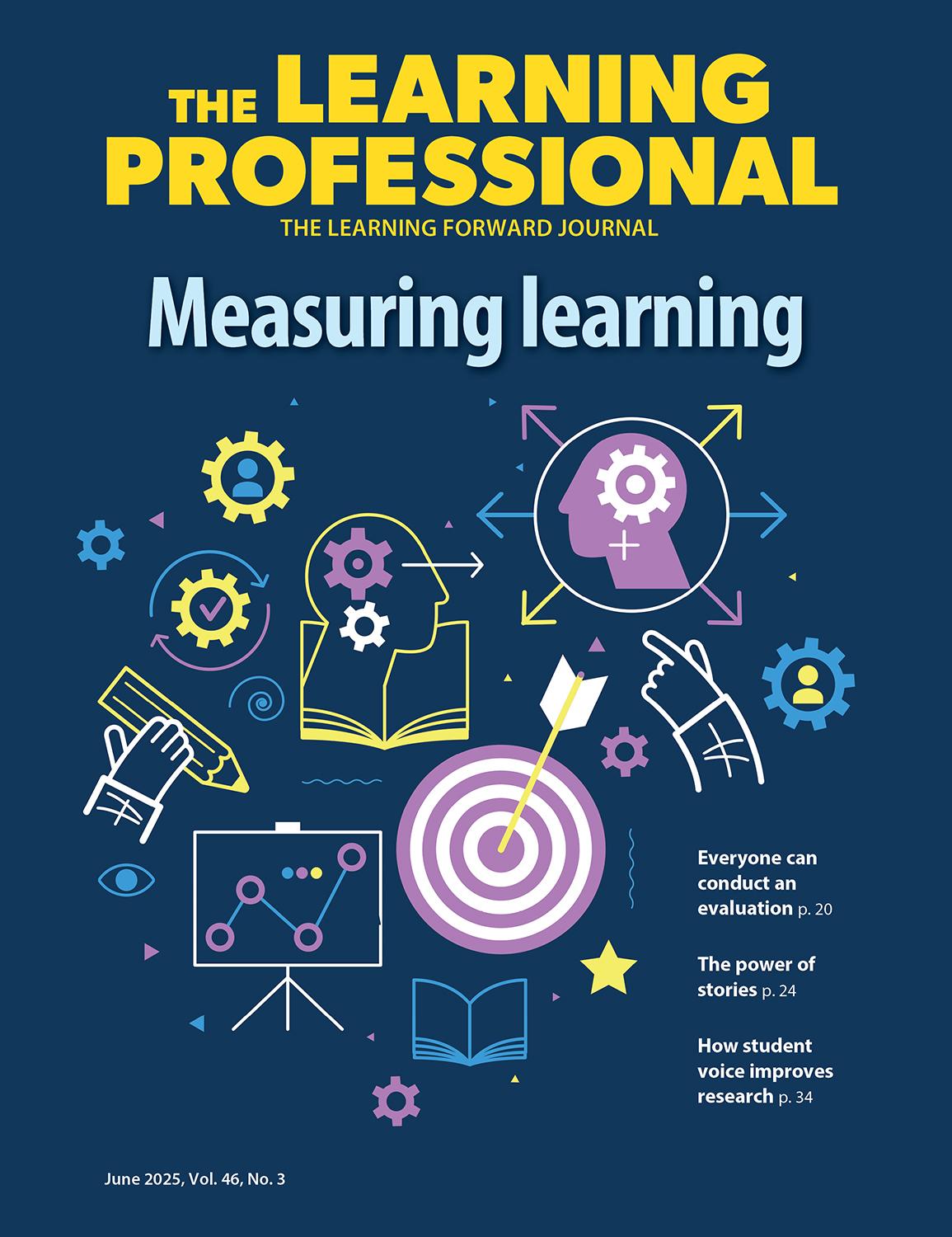A Tapestry Of Inquiry And Action
Cycle of learning weaves its way through washington district
By Learning Forward
June 2012
Vol. 33 No. 3
Read the remaining content with membership access. Join or log in below to continue.
Sed ut perspiciatis unde omnis iste natus error sit voluptatem accusantium doloremque laudantium, totam rem aperiam, eaque ipsa quae ab illo inventore veritatis et quasi architecto beatae vitae dicta sunt explicabo. Nemo enim ipsam voluptatem quia voluptas sit aspernatur aut odit aut fugit, sed quia consequuntur magni dolores eos qui ratione voluptatem sequi nesciunt. Neque porro quisquam est, qui dolorem ipsum quia dolor sit amet, consectetur, adipisci velit, sed quia non numquam eius modi tempora incidunt ut labore et dolore magnam aliquam quaerat voluptatem.
As an outsider, you would not guess there was any hierarchy in the room. Glancing down at highlighted and annotated text, the 11 leaders listen, elaborate, advocate, and reflect on the implications of the study they had just read on central office transformation. What do they recognize about themselves in the research? How does this inform their problem of practice? What does this mean for their own practices as leaders? The learning stance at the table belies any suggestion that this is not a level playing field, yet it is, in fact, a multilevel team of building and district leaders, instructional coaches, and the superintendent. The team’s coach sits back and watches the exchange with a satisfied smile on her face. She sees what she’s been working toward. They own this work; it is theirs.

What does a principal’s leadership problem of practice look like?
| Example 1:
How do I develop and model a building-wide practice where student and staff work is evaluated for learning? One guiding principle for me is leading with equity in mind. Do we teach using equitable practices? Do we have an equitable structure and schedule in place? I want to use student and teacher work to measure my success. I also want to use student focus groups as a measurement. |
Example 2:
How do I use data more systematically across grade levels, teams, and staffs across the district while meeting the needs of Title I, Learning Assistance Program, and Response to Intervention? I want to help teachers understand that standards need to be posted and public. One of the biggest challenges for struggling learners is knowing what they are supposed to know and be able to do. I will measure my success by asking special education students: “What are you doing and why?” If they can explain well, then standards are clearly present and taught. |
Example 3:
How can I keep staff focused on instructional strategies? I will continue to begin and end every collaborative session with my elevator speech, which allows me to continually send the message what we are doing and why. I will bring teams together to share and pull them into a shared conversation. I will measure my success with one-on-one interviews about my question above. |
What Isn’t Cooperative Group Work
| In working with differentiation, Karschney suggests that cooperative group work is not: | Having students sit side by side at the same table doing individual assignments; | Assigning a report to a group where one student does all the work and the rest put their names on it; | Simply discussing ideas, helping each other, or sharing materials — although these are important activities that can be part of cooperative learning. |

References
Copland, M. (2003). Leadership of inquiry: Building and sustaining capacity for school improvement. Educational Evaluation and Policy Analysis, 25(4), 375-396.
Learning Forward is the only professional association devoted exclusively to those who work in educator professional development. We help our members plan, implement, and measure high-quality professional learning so they can achieve success with their systems, schools, and students.
Recent Issues
NAVIGATING NEW ROLES
April 2025
Whether you’re new to your role or supporting others who are new,...
LEARNING DESIGNS
February 2025
How we learn influences what we learn. This issue shares essential...
BUILDING BRIDGES
December 2024
Students benefit when educators bridge the continuum of professional...
CURRICULUM-BASED PROFESSIONAL LEARNING
October 2024
High-quality curriculum requires skilled educators to put it into...









